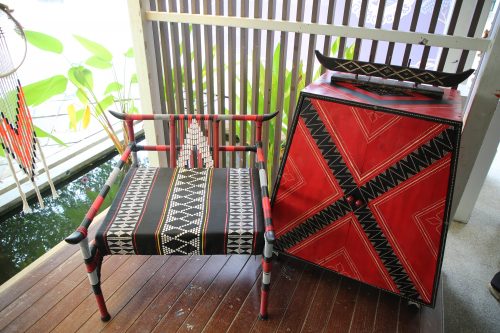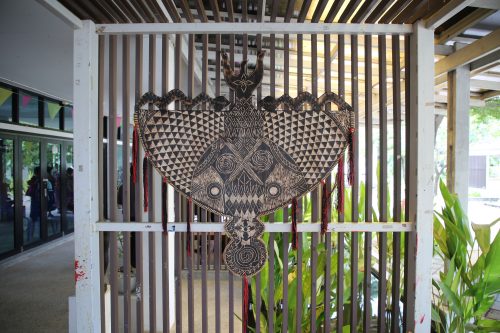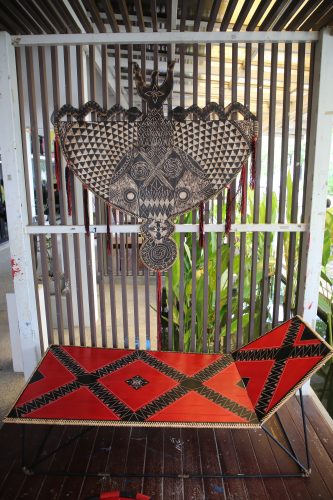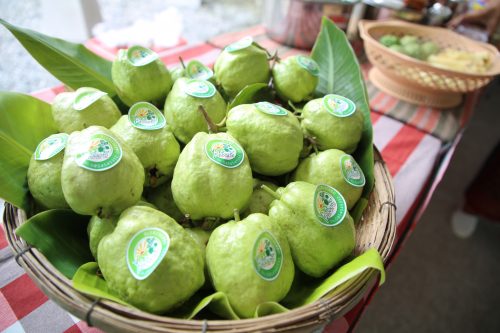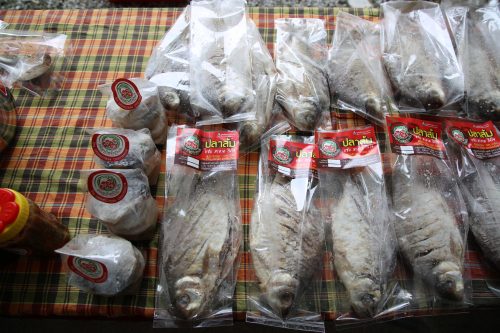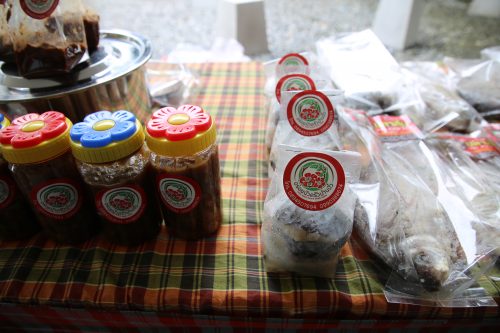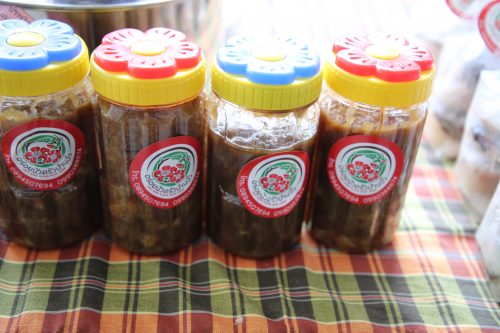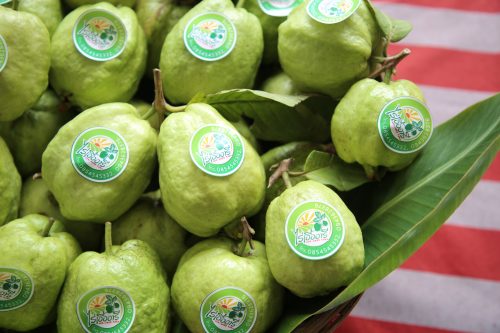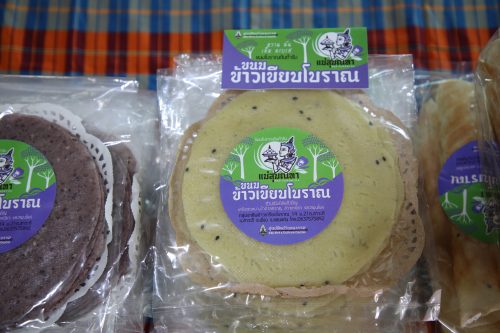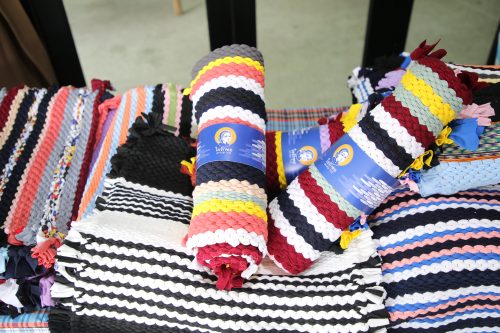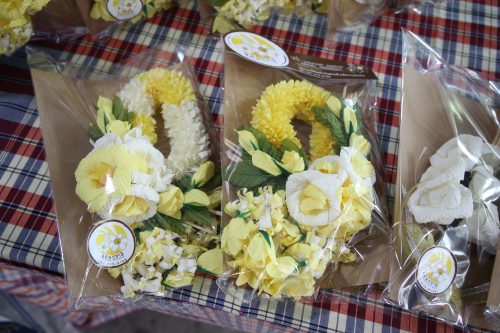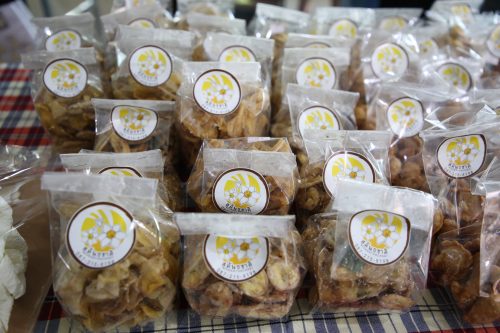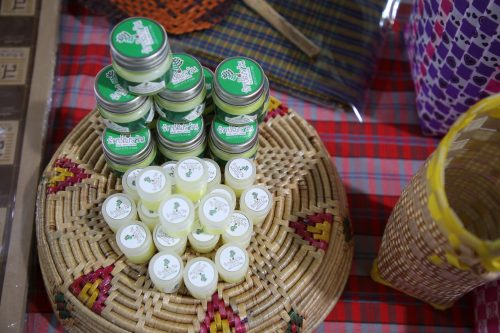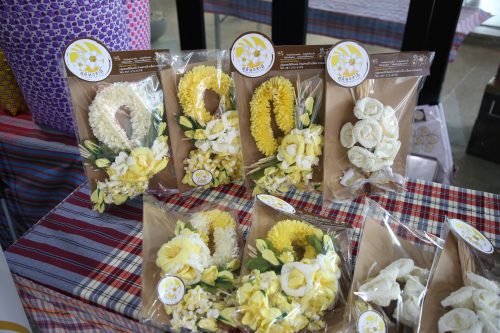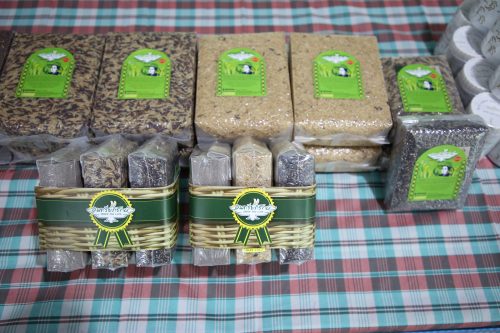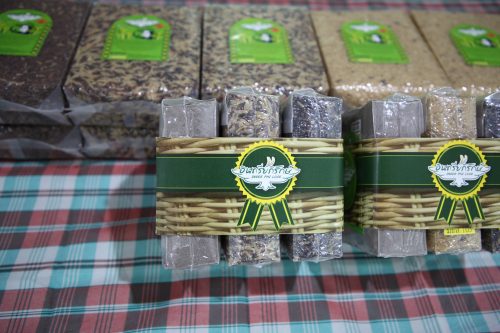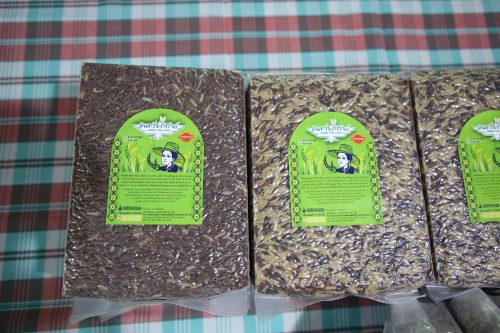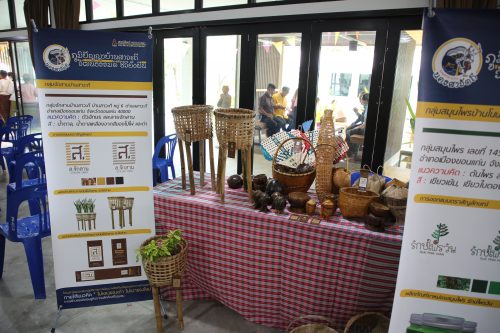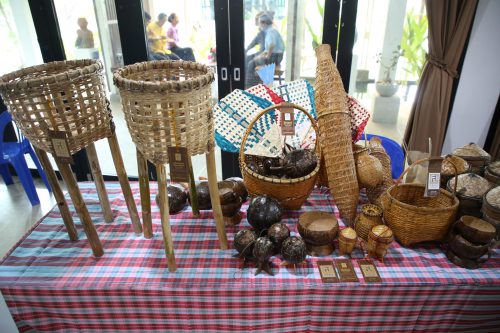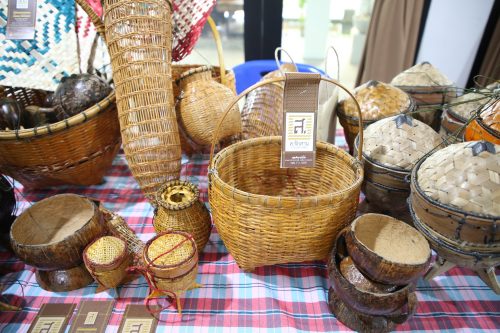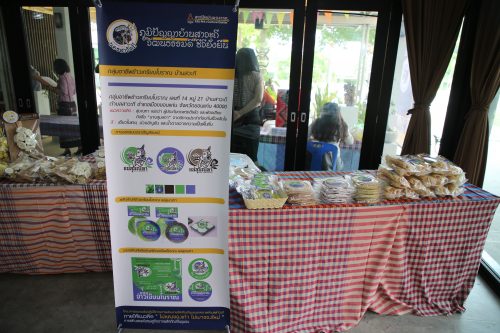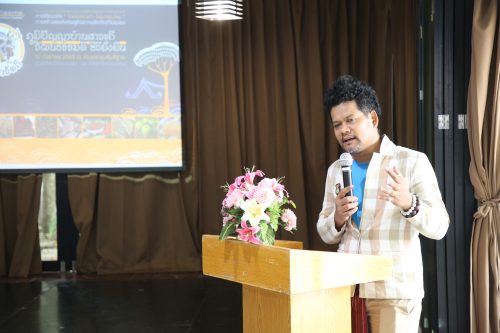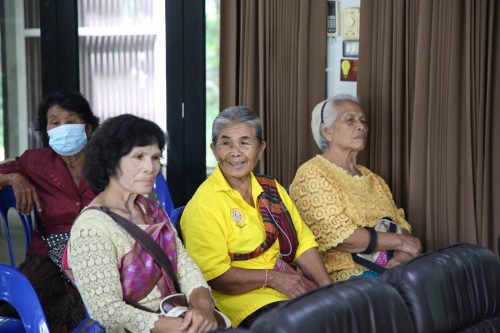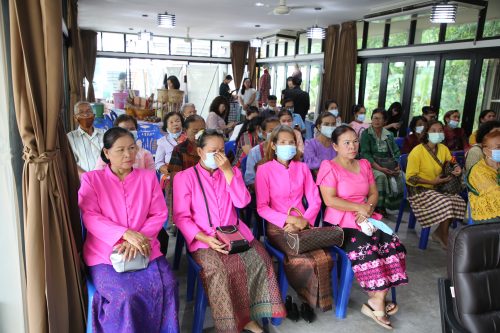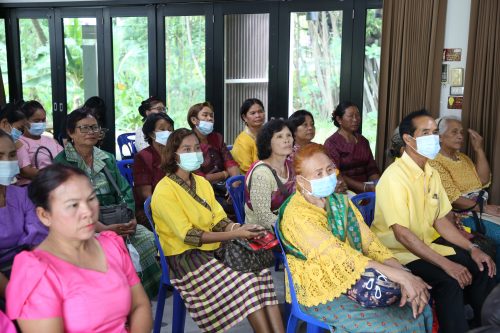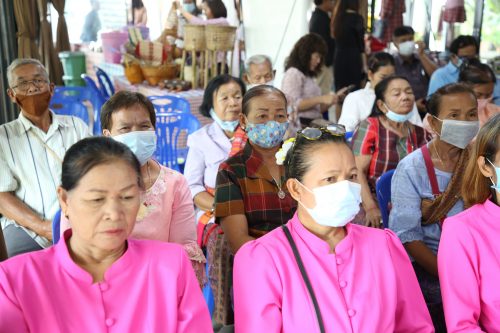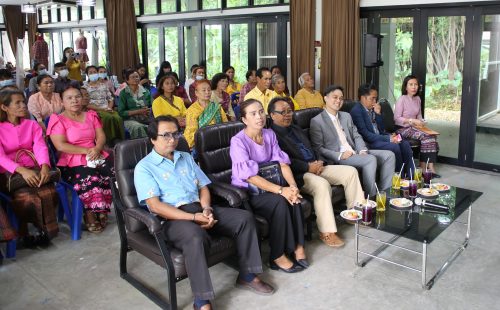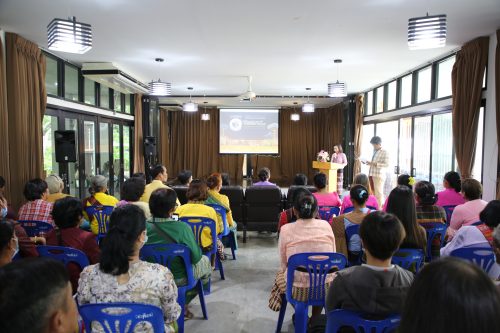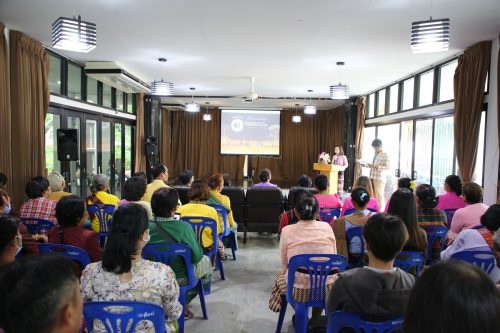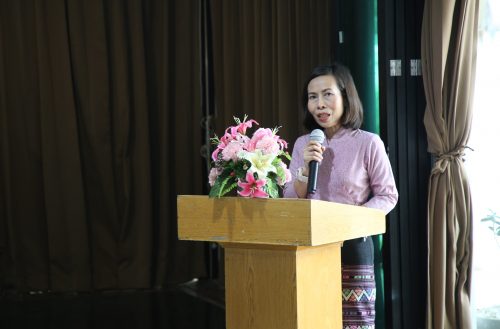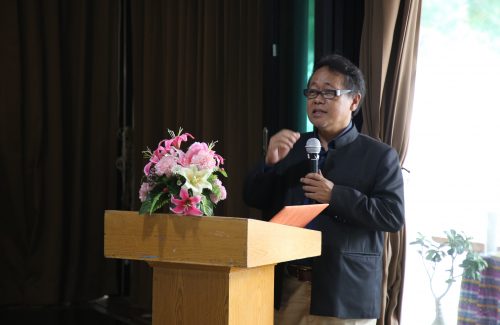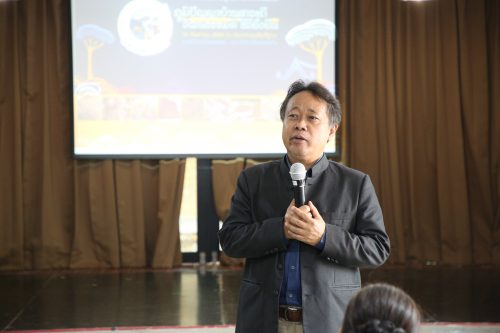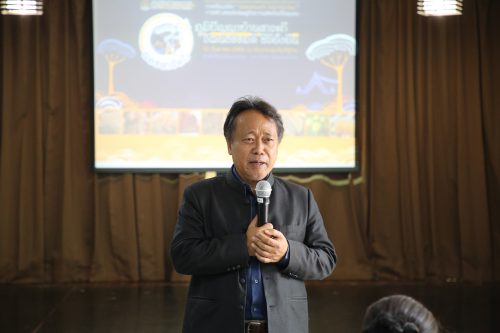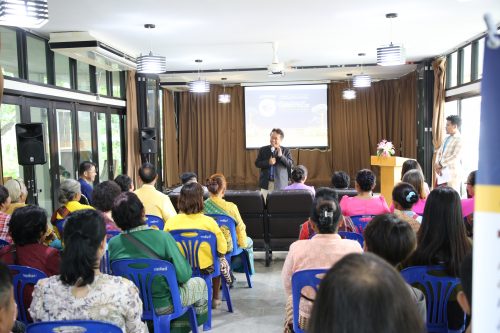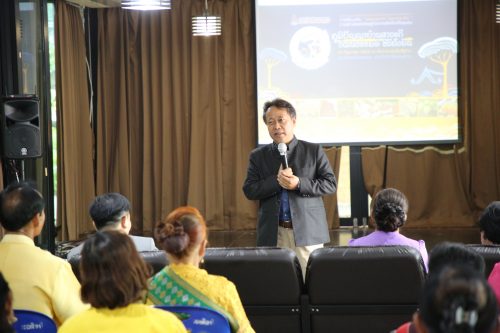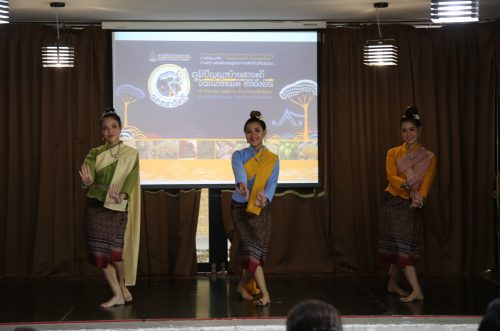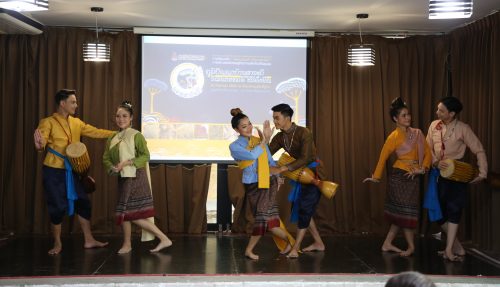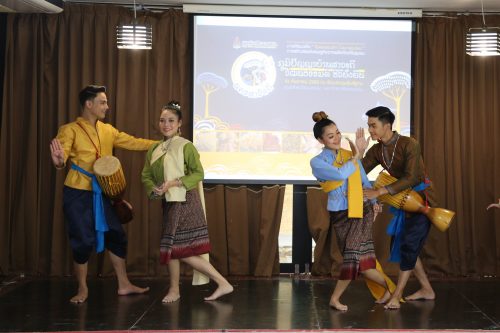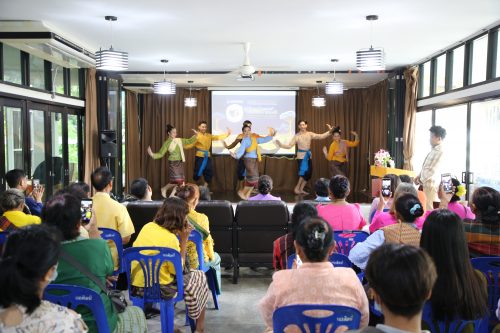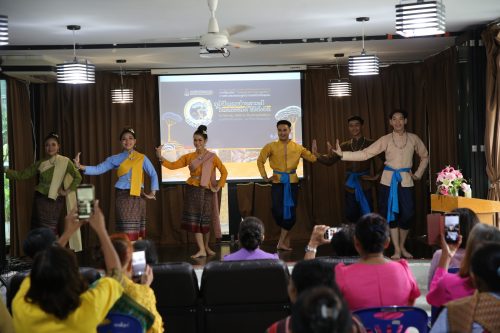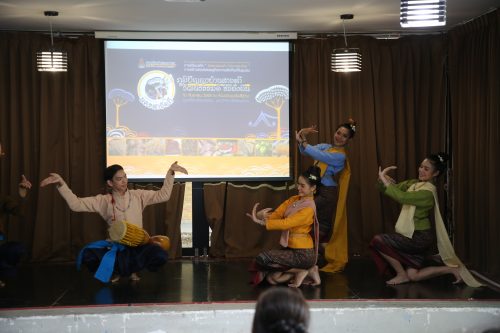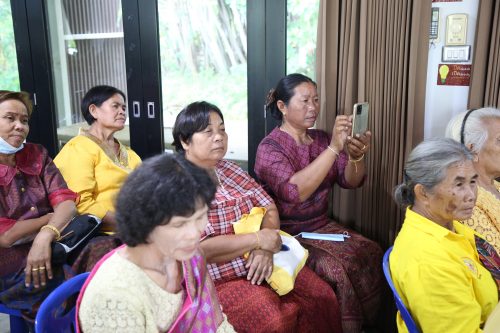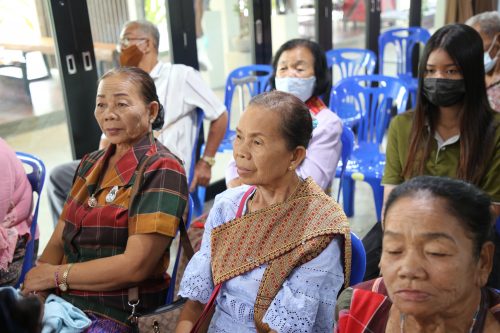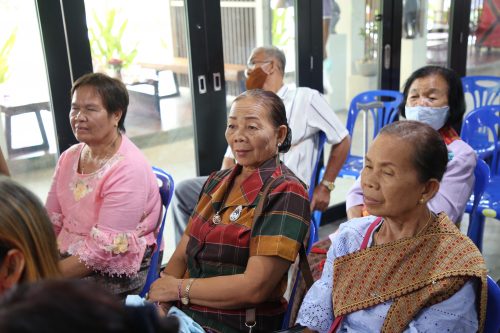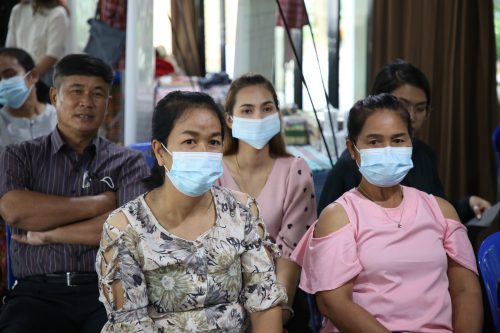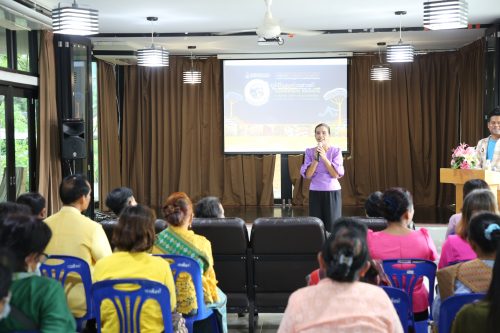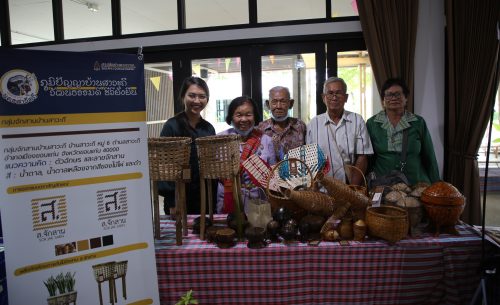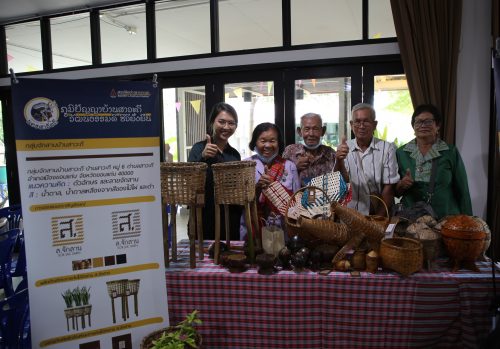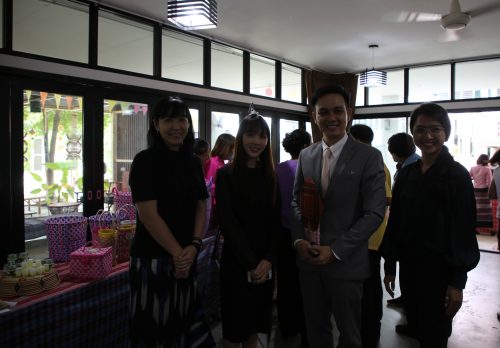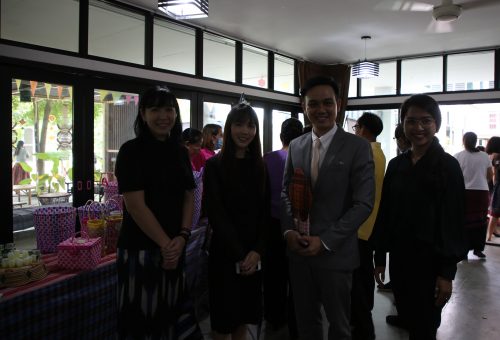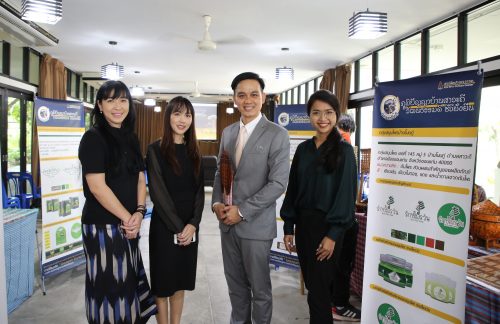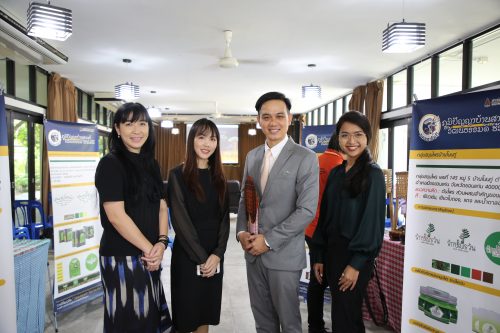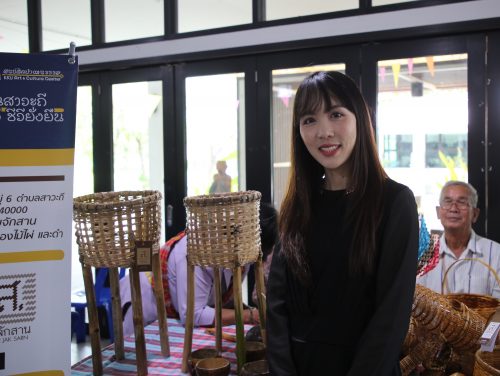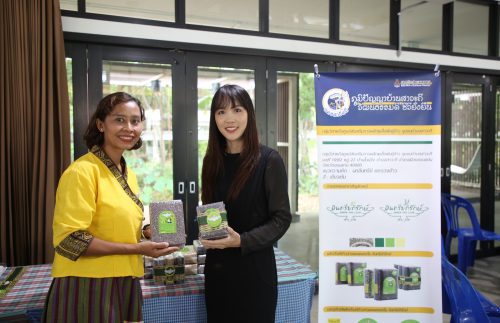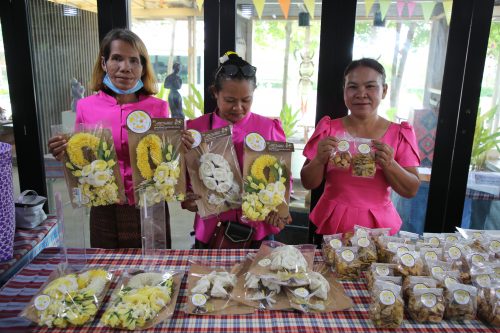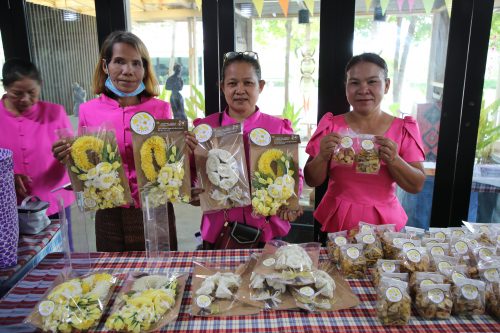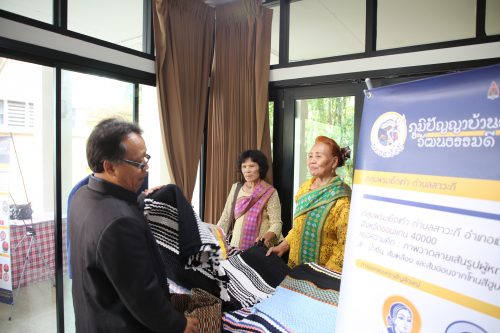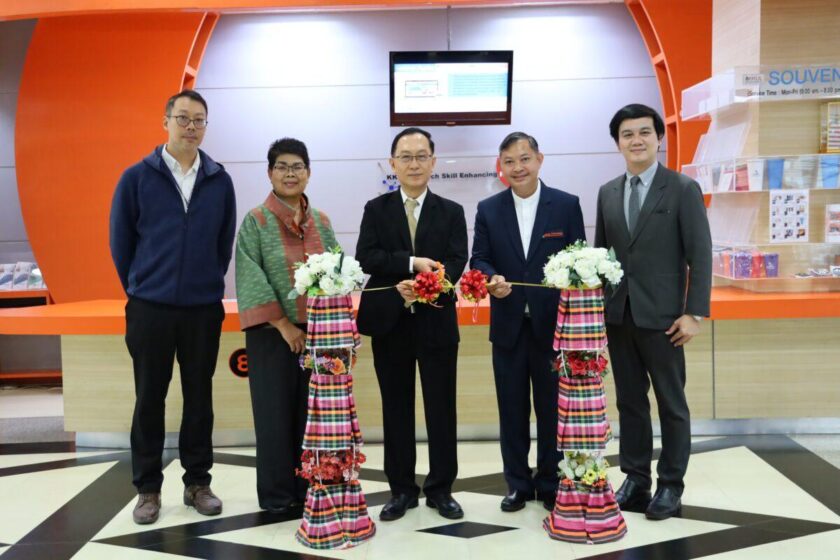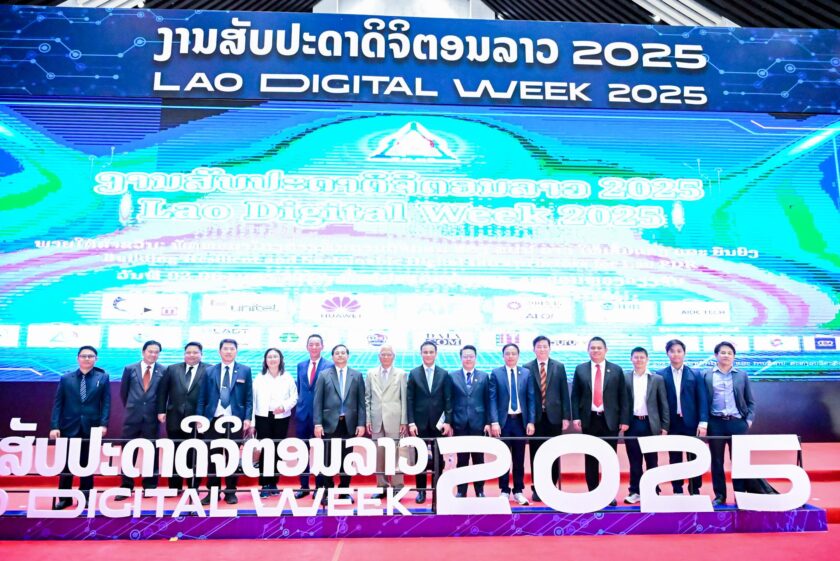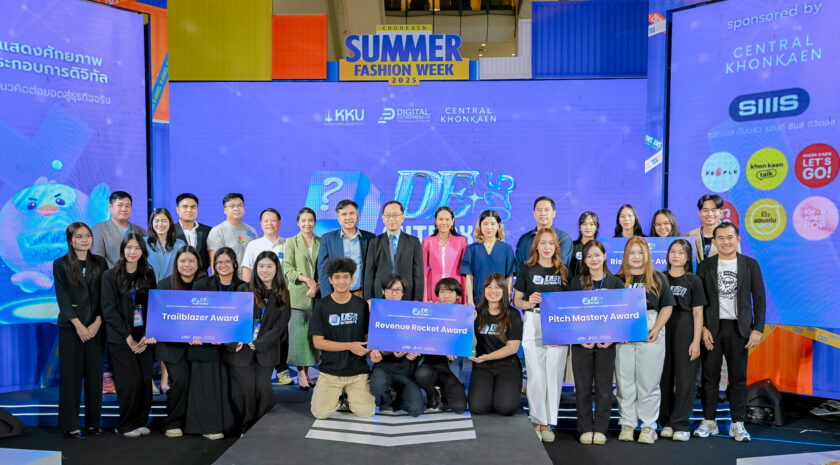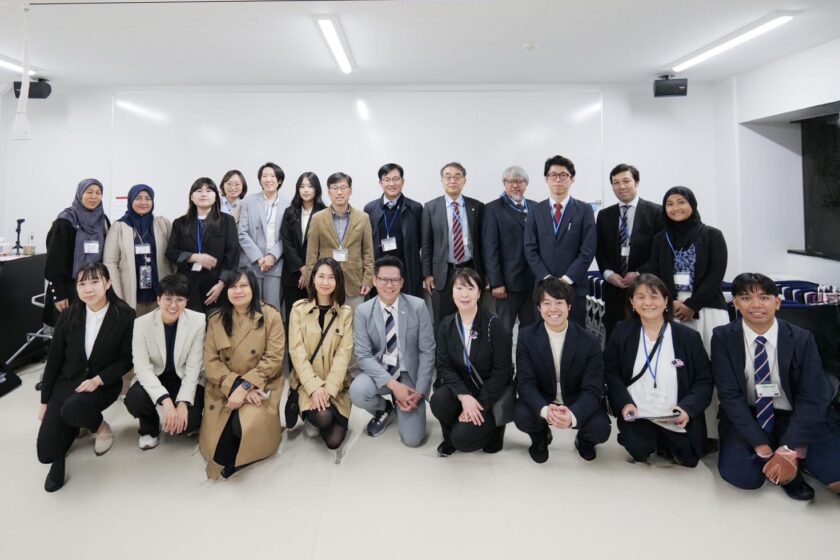September 10, 2020 at Khum Sithan Room, Cultural Center, Khon Kaen University – Khon Kaen University Cultural Center organized training and an exhibition under the “Workshop and Training on Development of Sawathee Sub-district Municipality’s Community Products”. Assoc. Prof. Niyom Wongpongkham, Ph.D., Vice President for Arts, Culture, and Creative Economy of Khon Kaen University have an opening address. Dr. Laddawan Seepachai, Director of the Cultural Center gave a reporting speech. Over 60 attendants were administrators, lecturers and community people who work with the project.
Dr. Laddawan Seepachai, Director of the Cultural Center said that Khon Kaen University’s Number 11 administrative tactic on enhancement of developmental cooperation was the rationale behind this “Workshop and Training on Development of Sawathee Sub-district Municipality’s Community Products”. The aims were to enable Sawathee Municipality to learn and train to create a work piece or a cultural-based creative product, transfer bodies of knowledge of art and culture to the community so that they had the idea to create their own product. The result from participation would also lead to people’s love and attachment towards their community.
There were 40 Sawathee community people attending the “Workshop and Training on Development of Sawathee Sub-district Municipality’s Community Products”. Ten products created were: crispy rice crackers, Hang rice, guava juice, cloth weaving and natural dye, cremation flowers, foot mats, herbs, wicker works, fermented fish paste, and pickled fish. The products were sold on August 5, 7, 2020 and September 10, 2020.
Assoc. Prof. Niyom Wongpongkham, Ph.D., Vice President for Arts, Culture, and Creative Economy explained that Sawathee Sub-district, Muang District, Khon Kaen is the community that Khon Kaen University frequently uses as the learning and practicing center for KKU students. The community also cooperates with the university to the fullest extent. As an art and cultural administrator, the vice president is determined to help develop the community to the fullest capacity, too.
“A community is composed of homes, a temple, and a school. Chaisri Temple at Ban Sawathee has Hoop Taem, which is the world famous item. A lot of visitors come to see it from all over the world. When the temple is well known, the community should be observed. What do villagers have? I believe that the roots of wisdom of Isan can be found everywhere. There are desserts, handicraft, indigenous wisdom. What can we do to make all these known to the world? We should present the cultural roots of Sawathee to the world. From now on, we will build the Sawathee Model, a model assisted by KKU. Sawathee will become a prototype or a model community that cooperates with Khon Kaen University to manufacture the products that the villagers exhibit today. Khon Kaen University will support and upgrade these products. We will gradually step forward using our potentials that we have. KKU will help in everyway we can until Sawathee Model will fully show how the roots are exposed to the world. Then Sawathee will be the model for other communities,” said Assoc. Prof. Niyom.
Ajarn Apinya Asarat, Deputy Director of Khon Kaen University Cultural Center revealed that this project is part of a mission of the Cultural Center in terms of creative economy. The workshop was therefore arranged. “We selected Sawathee Municipality because the place has the cultural capital, which consists of local wisdom. We then coordinated with the Municipality, and the community cooperated by choosing their outstanding products that had not been upgraded yet.”
“We went with a team of lecturers from Faculty of Architecture of Khon Kaen University who have expertise in developing products and design to enter the area and explained to the people there how they could develop their products. At the beginning, we collected data from 10 housewife groups chosen by the Municipality. They were brainstormed, pooling in information of what they are doing, what they need. The design would be according to the potentials of the group so that they could continue to improve. If anything was done beyond their capacity, they wouldn’t be able to continue with their product. In the second phase, the visit involved drafting the design with the villagers and adjusting so that the villagers would judge whether what they formerly thought during the first round was okay and could be produced into a prototype. The second phase therefore involved data collection, brainstorming, drafting and designing, until producing the prototype. The third phase, which is today, the prototypes are brought to the exhibition. The villagers can see the outcomes of what they have done with Khon Kaen University. The response from the Municipality is impressive. There has been good cooperation between the university and the community, which is a good start. After today, when the community product group has an idea of the brand and market name, they can proceed on marketing, considering the potential of themselves whether they can continue with the development and what they can do in the next step,” the Deputy Director of Khon Kaen University Cultural Center said.
[ Thai ]


